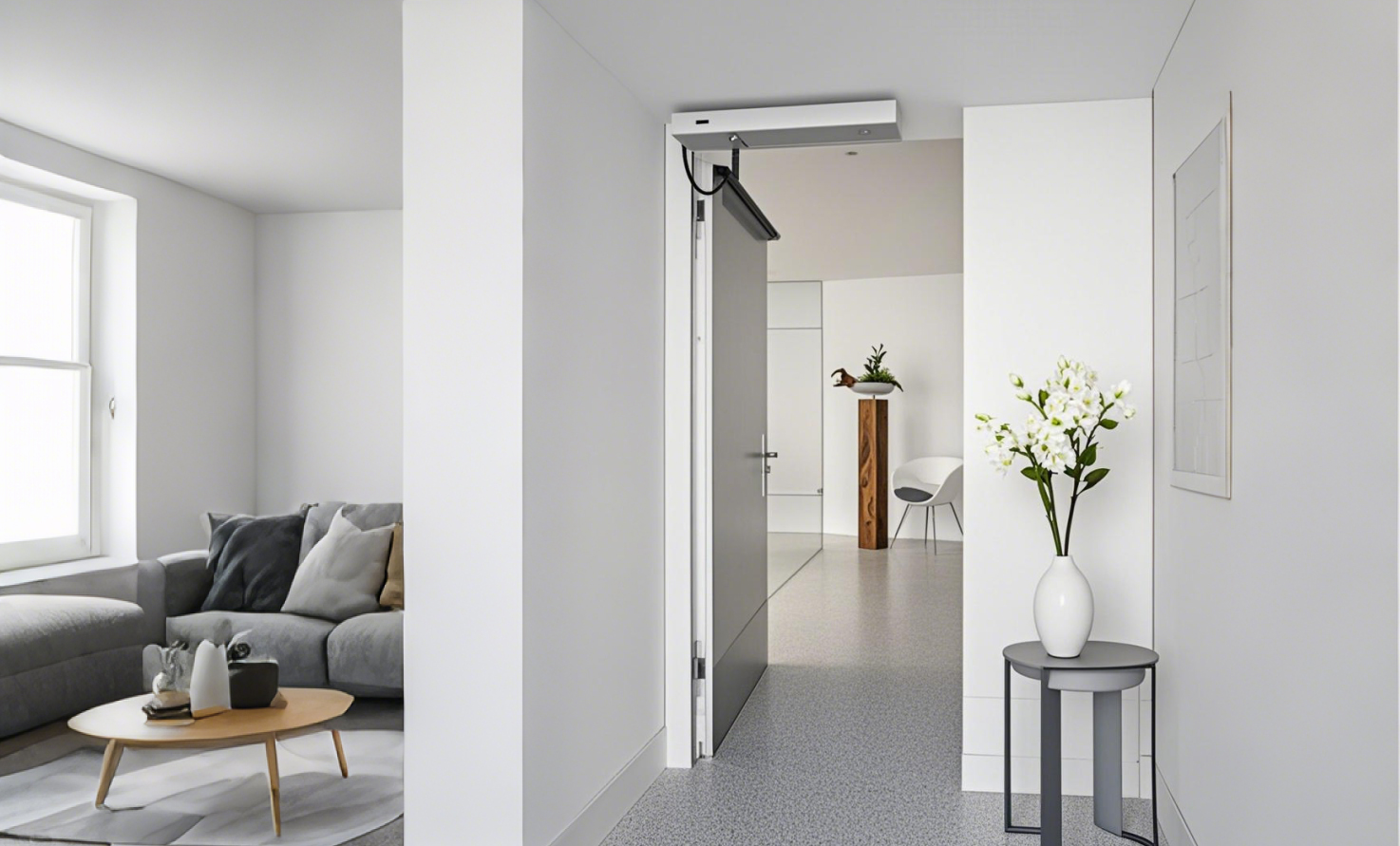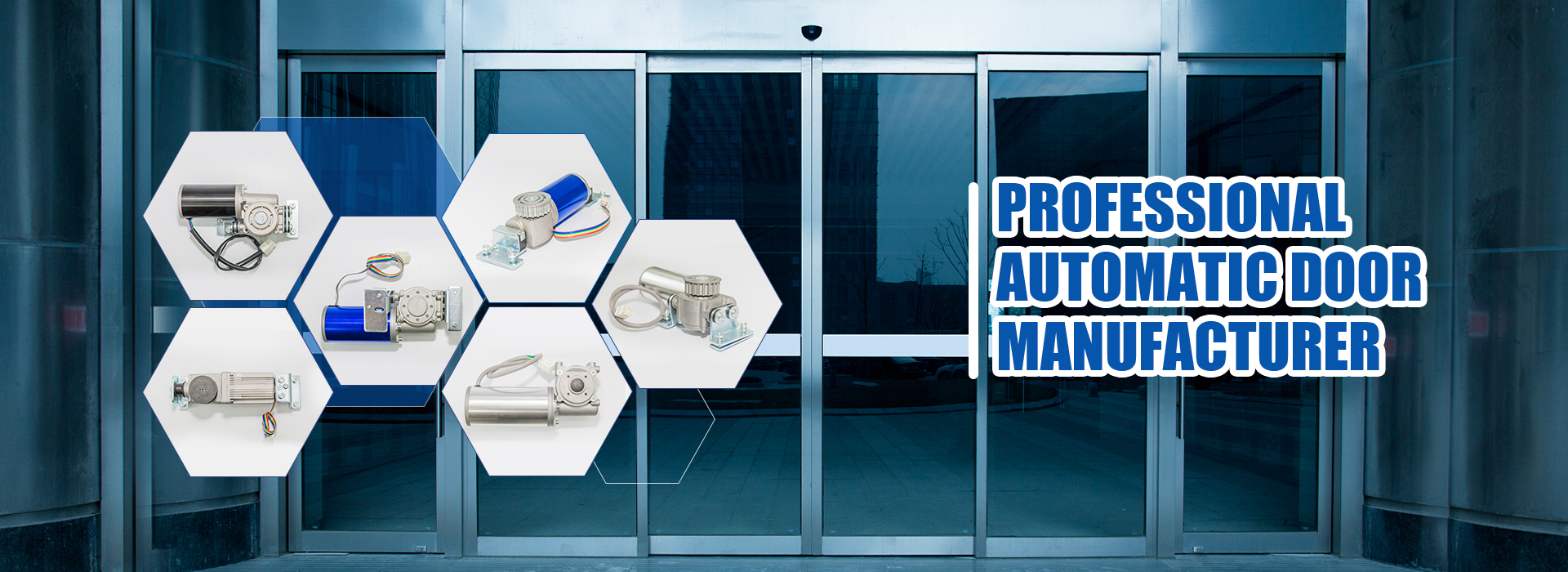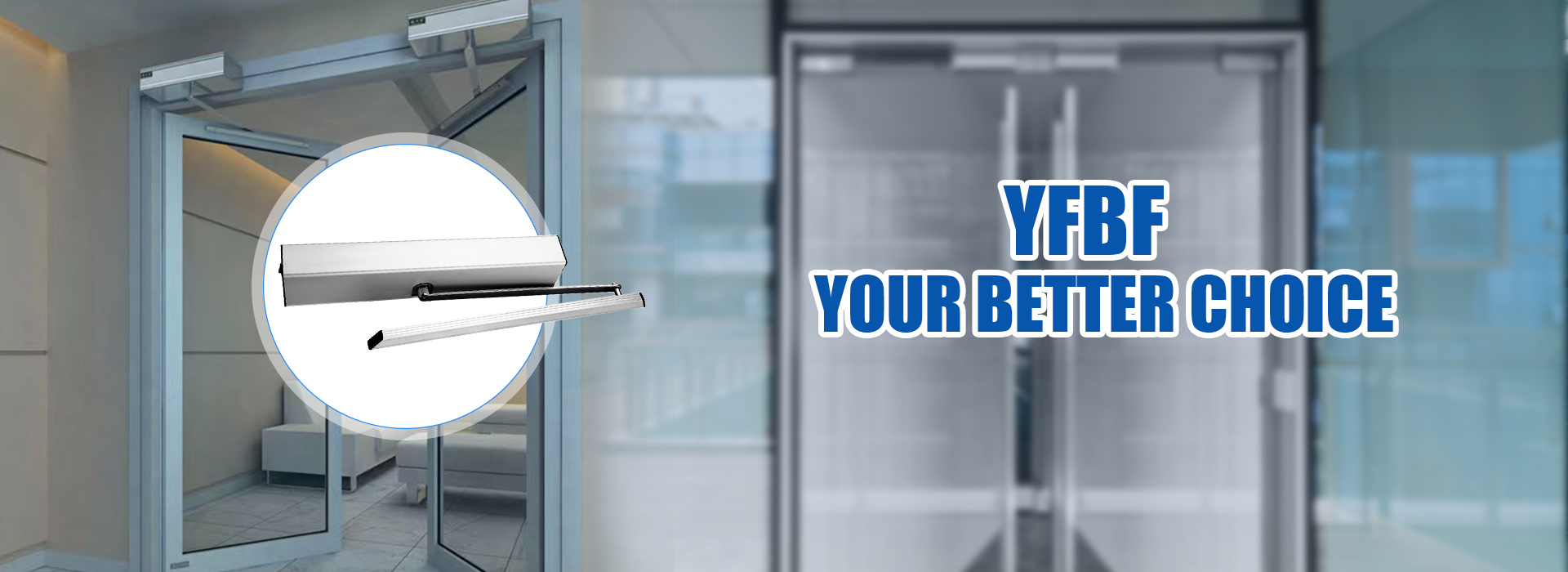
Imagine a door that opens for you with just a push of a button or a wave of your hand. A residential automatic swing door opener makes this possible, offering hands-free entry for anyone. Advanced safety features prevent accidents, while user-friendly controls ensure easy access for seniors, children, and individuals with mobility challenges.
Key Takeaways
- Automatic swing door openers let you enter without using hands. This makes daily life easier, especially for seniors or those with mobility issues.
- These door openers are safer with sensors that detect obstacles. They help prevent accidents in homes with kids or pets.
- Picking the right opener means thinking about your door type, budget, and upkeep. This ensures it works well for your needs and improves access.
What Are Residential Automatic Swing Door Openers?
Definition and Functionality
A residential automatic swing door opener is a device that automates the opening and closing of swing-style doors in homes. Powered by an electric motor, it eliminates the need for manual effort, making entry and exit seamless. These openers are designed to enhance convenience and accessibility, especially for individuals with mobility challenges. They operate using advanced mechanisms, such as “Push and Go,” where a slight manual push activates the automatic system, or “Power Assist,” which reduces the force needed to open the door manually.
Automatic swing door openers also come in “Low Energy” and “Full Energy” models. Low Energy systems prioritize safety and minimal physical effort, while Full Energy models are built for frequent use and faster operation. These features make them ideal for residential settings, where ease of use and reliability are essential.
Key Components
Residential automatic swing door openers consist of several key components that work together to ensure smooth operation:
- Electric Motor: Powers the opening and closing mechanism.
- Control System: Includes sensors, buttons, or remote controls for user interaction.
- Arm Mechanism: Connects the opener to the door and facilitates movement.
- Safety Features: Incorporates sensors to prevent accidents and ensure safe operation.
Some models integrate a return spring or reducing gears to close the door in case of power failure. Others rely on a standard door closer, which allows manual operation when needed. These components ensure the opener functions reliably while offering flexibility for homeowners.
How They Operate in Homes
Residential automatic swing door openers simplify daily life by automating door movement. Here’s how they typically work:
- Activation: The system activates through a sensor, button, or remote control. For “Push and Go” models, a slight push triggers the automatic mechanism.
- Door Movement: The electric motor powers the arm mechanism, opening the door smoothly. Depending on the model, the door may open at varying speeds and force levels.
- Safety Checks: Sensors detect obstacles and stop the door to prevent accidents.
- Closing: The system closes the door automatically, either through the motor or a return spring.
These openers enhance safety by allowing hands-free operation and contribute to energy efficiency by regulating indoor temperatures. Their ease of installation and operation makes them a popular choice for residential use.
| Feature | Swing Type Operator | Slide Type Operator |
|---|---|---|
| Installation Ease | Easy to install | More complex installation |
| Speed of Operation | Faster opening and closing | Slower compared to swing type |
| Cost | Lower installation and maintenance costs | Higher installation and maintenance costs |
| Common Usage | Typically used in residential settings | More common in industrial applications |
By automating door movement, residential automatic swing door openers improve accessibility and convenience for homeowners. They are especially beneficial for seniors, children, and individuals with mobility challenges, making everyday tasks easier and safer.
Key Benefits of Residential Automatic Swing Door Openers
Convenience
A residential automatic swing door opener brings unmatched convenience to daily life. Imagine carrying groceries or holding a sleeping child and not having to fumble with a door handle. These devices make such scenarios effortless. With just a wave of your hand or the press of a button, the door opens smoothly, saving time and effort.
In high-traffic environments like hospitals or public facilities, automatic doors have proven their convenience. Here’s a quick look at how they perform in different settings:
| Environment Type | Usage Context |
|---|---|
| Healthcare | High-traffic settings like hospitals |
| Institutional | Public facilities with accessibility needs |
| Emergency Situations | Easily opened in emergencies |
For homeowners, this same level of convenience translates into a more comfortable and stress-free living experience. Whether it’s welcoming guests or managing daily chores, these openers simplify it all.
Accessibility
Accessibility is another standout benefit of a residential automatic swing door opener. These devices are a game-changer for individuals with mobility challenges, seniors, and even children. By automating door movement, they eliminate physical barriers, making homes more inclusive and user-friendly.
Features like “Push and Go” or remote-controlled activation ensure that anyone can operate the door with minimal effort. This is especially helpful for wheelchair users or those with limited strength. Additionally, the ability to customize settings, such as opening speed and force, allows homeowners to tailor the system to their specific needs.
Automatic swing door openers also enhance accessibility during emergencies. For instance, in situations where quick evacuation is necessary, these doors can be opened effortlessly, ensuring everyone’s safety.
Safety
Safety is a top priority for any home, and a residential automatic swing door opener delivers on this front. These systems come equipped with advanced safety features like sensors that detect obstacles and prevent the door from closing on someone. This reduces the risk of accidents, especially in households with children or pets.
Many models also comply with fire protection standards, offering an added layer of security. For example:
These features make automatic swing door openers a reliable choice for homeowners who prioritize safety without compromising convenience or accessibility.
Installation and Maintenance of Residential Automatic Swing Door Openers
Installation Process
Installing a residential automatic swing door opener requires careful planning and adherence to industry standards. Following these steps ensures a smooth and compliant installation:
- Check Compliance: The ADA (Americans With Disabilities Act) outlines specific requirements for automatic door openers. For example, activation devices must be operable with one hand and require minimal force. They should also be placed outside the door’s swing path to prevent accidents.
- Prepare the Door: Measure the door size and confirm it meets the opener’s specifications. Ensure the door frame is sturdy enough to support the system.
- Set Up Electrical Connections: Automatic swing door openers need a power source. Verify the electrical requirements and install wiring as per the manufacturer’s guidelines.
- Follow the Manual: Use the step-by-step instructions provided by the manufacturer. Diagrams can help with positioning the motor, arm mechanism, and control system.
Proper installation not only ensures functionality but also enhances safety and accessibility for all users.
Maintenance Tips
Regular maintenance keeps a residential automatic swing door opener running smoothly and safely. Here are some tips to follow:
- Inspect Annually: Building owners or operators should inspect the system at least once a year. This ensures all components, like sensors and motors, function correctly.
- Increase Frequency for High Usage: In homes with frequent use, quarterly or even monthly inspections may be necessary. This prevents wear and tear from affecting performance.
- Clean and Lubricate: Dust and debris can accumulate in the arm mechanism or motor. Clean these parts regularly and apply lubricant to reduce friction.
- Test Safety Features: Check sensors and activation devices to ensure they respond accurately. Replace any faulty components immediately.
| Inspection Frequency | Responsibility | Notes |
|---|---|---|
| At least once a year | Building owner/operator | Essential for maintaining safety and efficiency. |
| Quarterly or monthly | High-usage households | Prevents wear and tear in frequently used systems. |
By following these maintenance practices, homeowners can extend the lifespan of their automatic swing door opener and ensure it operates reliably.
Choosing the Right Residential Automatic Swing Door Opener
Factors to Consider
Selecting the perfect residential automatic swing door opener involves evaluating several key factors. Each home has unique needs, so understanding these considerations can help homeowners make informed decisions:
- Type of Door: Determine whether your door is swinging or sliding. Swinging doors are more common in residential settings, making them a popular choice.
- Budget: Set a spending limit and explore options within that range. Many models offer advanced features at competitive prices.
- Location: Assess the installation site. Ensure there’s enough space for the opener and that a power source is accessible.
- Maintenance: Consider the upkeep required. Some models need regular inspections, while others are designed for low-maintenance use.
- Weatherproofing: If the door is exposed to outdoor elements, choose an opener that can withstand local weather conditions.
The North America swing door operators market report highlights the growing demand for these systems in residential settings. It also emphasizes the importance of understanding market trends and competitive dynamics when selecting a door opener.
Residential automatic swing door openers bring convenience, accessibility, and safety to homes. They simplify daily tasks, especially for seniors and individuals with mobility challenges. With features like touchless operation and energy efficiency, these systems enhance modern living.
The growing demand for automated solutions reflects their value. For instance:
- Hotels use them to improve guest accessibility.
- Regulatory frameworks encourage their adoption in new buildings.
- Sustainability trends drive innovation in this market.
The residential sector is embracing these openers for their ability to improve accessibility and hygiene. Touchless solutions, in particular, align with post-pandemic preferences, making them a smart choice for homeowners.
Why wait? Explore installing a residential automatic swing door opener today and experience the difference it can make in your home.
FAQ
What types of doors can automatic swing door openers work with?
Automatic swing door openers work with most standard swing doors, including wooden, metal, and glass doors. They are versatile and fit various residential setups.
Are automatic swing door openers energy-efficient?
Yes! Many models include energy-saving features like low-energy operation and motion sensors. These help reduce electricity usage while maintaining convenience and functionality.
Can I install an automatic swing door opener myself?
Some models are DIY-friendly and come with detailed instructions. However, professional installation ensures proper setup and compliance with safety standards.
Post time: May-16-2025



